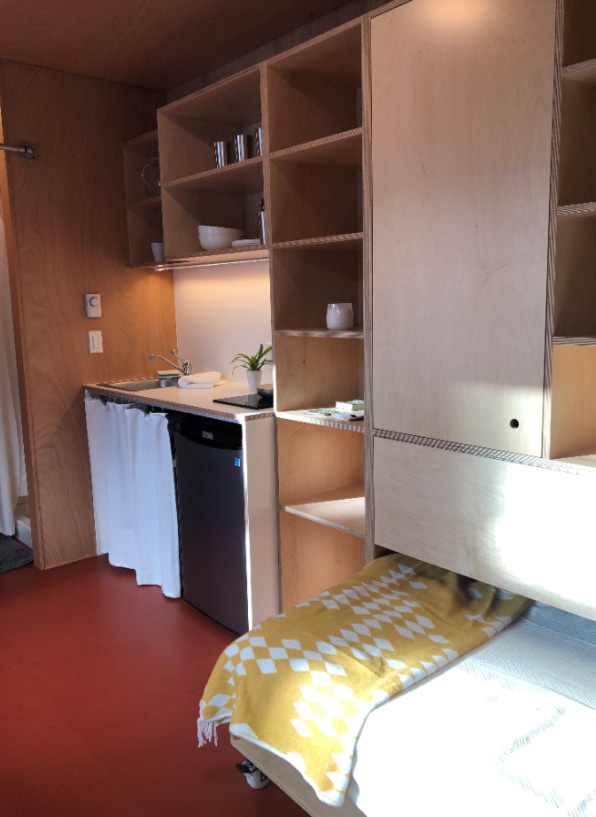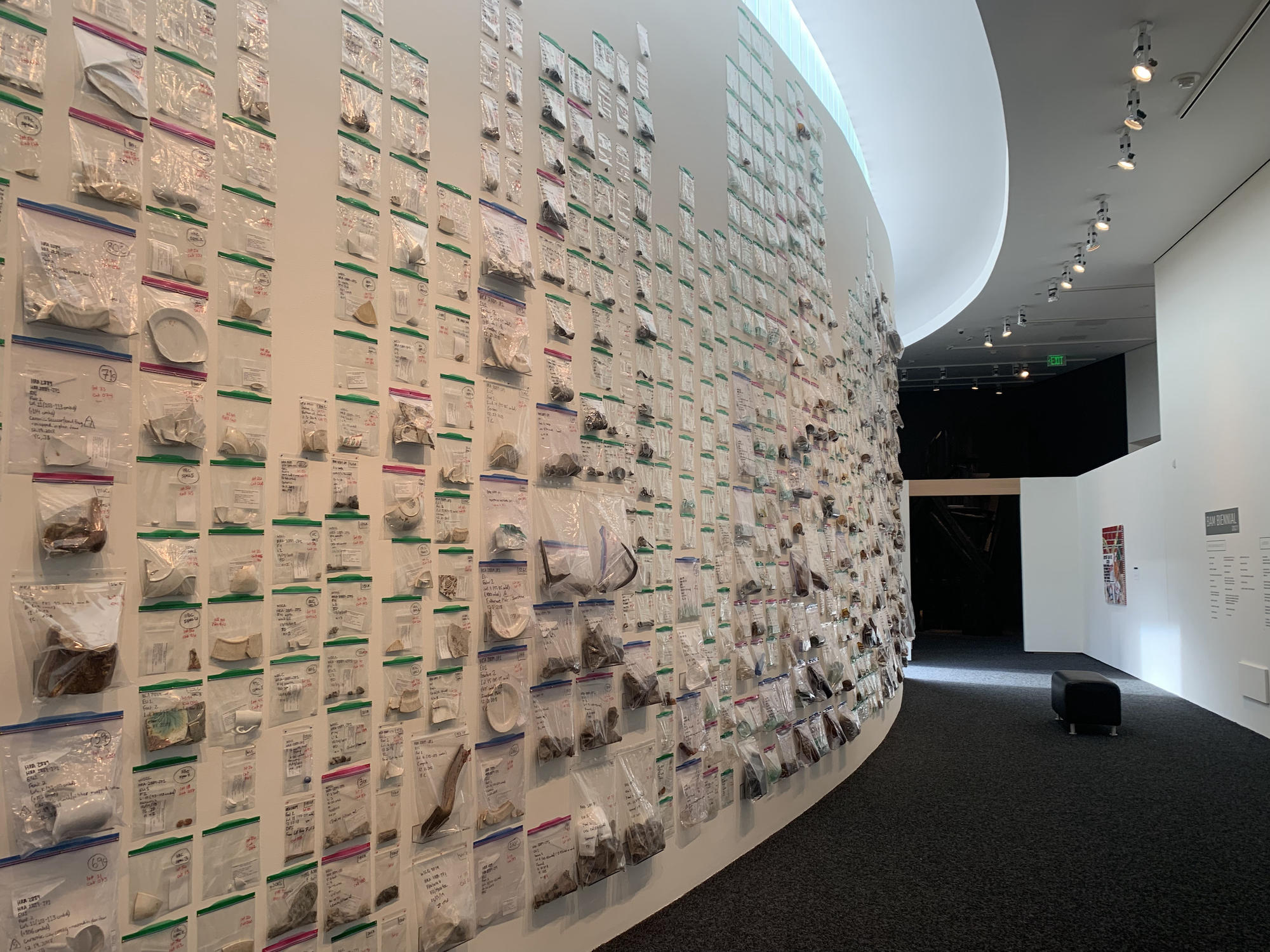Four years ago, the owners of a small single-family home in Seattle decided to volunteer their garden for something new: They had a non-profit organization build a small sustainable house in the garden and helped a man who had been homeless for a decade to move in rent-free. He still lives there and has developed a close relationship with the homeowners. And 11 more homeowners have followed in a small but growing program called the Block Project.
[Photo: courtesy Block Home]”The community has to get involved if we want to end homelessness,” says Rex Hohlbein, an architect whose career slowly shifted to tackling homelessness after he befriended an unhodged artist in front of his architecture office and who eventually took the block Project launched. “It is far too complicated to have just one government program. It really is a complete change in the way a community acts and moves forward to meet the needs of the most vulnerable. “
Hohlbein founded a non-profit organization called Facing Homelessness in 2013 and then came up with a somewhat radical idea together with his daughter, the architect Jenn LaFreniere. If in a city like Seattle, where the land is expensive and large construction projects can take years, it’s difficult to build supportive, affordable housing, why not ask local residents to share their backyards directly? The city already had zoning laws that allowed “additional housing units” or backyard houses. As the concept of using backyard houses for homeless housing evolved, urban planning helped make building as easy as possible for people.
The program is not aimed at everyone who is affected by homelessness. For example, someone with severe mental health problems would be better off in a different environment that offers more services. But for others, it is a way of having a stable apartment and connecting with neighbors in an area they would otherwise not have been able to live in.
Case managers from the agency that referred each resident continue to work with them after they move in. Facing Homelessness staff provide additional support with the goals participants set for themselves, from professional training to establishing healthy habits, and the nonprofit also connects residents with neighborhood volunteers to build relationships. All homeowners are asked to be good neighbors. People were quick to respond to the idea.
The tiny houses are only 125 square meters and have kitchen areas, bathrooms, a sleeping area and a small covered porch. They were designed according to the strict sustainability standards of the Living Building Challenge and offer functions such as solar energy and rainwater collection and cleaning. “It was important that we not only offer a home that meets the needs of the accommodation, but that it is a progressive home,” says Hohlbein. “In fact, it would be the frontmost home on the block.” He wanted to give the new residents the opportunity to exchange ideas with their neighbors and teach others how their houses could be retrofitted.
 [Photo: courtesy Block Home]When a homeowner applies to participate, Facing Homelessness evaluates the garden to see if it meets the city’s permit requirements for a backyard home and then interviewed the homeowners. To avoid a hike in homeowners’ property tax, the nonprofit will retain ownership of the tiny house and rent part of the back yard for free in five years in the hope that the homeowner will keep renewing.
[Photo: courtesy Block Home]When a homeowner applies to participate, Facing Homelessness evaluates the garden to see if it meets the city’s permit requirements for a backyard home and then interviewed the homeowners. To avoid a hike in homeowners’ property tax, the nonprofit will retain ownership of the tiny house and rent part of the back yard for free in five years in the hope that the homeowner will keep renewing.
Agencies point out unhodged individuals who they think would fit well into the program, and Facing Homelessness acts as a go-between. The nonprofit also meets with neighbors to help alleviate fears that may be based on stereotypes about homelessness. The homeowner hosting can also be an advocate and rely on their own relationships with neighbors to enforce the apartment.
It is not to be expected that someone who lives in one of the tiny homes will have to keep looking for another apartment. “It’s important to note that we consider this to be long-term living,” says Jennifer Tee, assistant director of Facing Homelessness. (Hohlbein and his daughter are no longer running the project, but are still involved.) “We understand that many people who move into these houses experience some form of trauma, be it from homelessness or previous experiences. We really want this to be a stable environment so that someone doesn’t think, ‘Oh no, I have to move in a year’ or ‘I have to move in two years’. “
The first Tiny Home to be built was when the resident was 74 years old when they moved in. Holhbein says he got so close to the homeowners that he could potentially live there for the rest of his life.
The project’s first homes were built through volunteer work in the participants’ backyards, but since the contractors had a busy schedule the process took months. Last year, Facing Homelessness designed a new system of panels that could be built in a workshop and then assembled on site within a few days to form walls, roof, cupboards and the rest of the basic structure.
“Everything is built in the block shop with the help of devices, which means that volunteers without any design knowledge can come and build the panels,” says Hohlbein. The nonprofit works with local plumbers and electricians to set up utilities and provides basic furnishings, including a bed frame and mattress, collapsible desk, refrigerator, and stove top. A community-funded “Welcome Home Kit” offers other important items such as curtains, pots and pans, cutlery, bed linen, cleaning products and shampoo.
The program has so far grown solely through word of mouth, Tee says, although the nonprofit is now planning to recruit new homeowners. Hohlbein believes the idea will become more mainstream. “Airbnb, the idea of a total stranger staying in your house while you sleep – that’s crazy,” he says. “I’m old enough to know before Airbnb, and the thought was just ridiculous. And now nobody thinks about it. We therefore believe that the same kind of cultural change will take place with the block project. “
Although the original vision was to install a tiny house in each block that could provide enough living space for almost every homeless person in the city, the nonprofit plans to grow slowly. “We scale with the pace of the community,” says Tee. “We want to make sure that every time you refer a resident, we have all the capacities we need to support that resident.”
https://www.fastcompany.com/90686649/these-homeowners-volunteer-their-backyards-for-tiny-housing-for-homeless-neighbors







:quality(70)/cloudfront-us-east-1.images.arcpublishing.com/cmg/BPEI2QQ76SHPPOW6X6A6WHEGX4.jpg)
















:quality(70)/cloudfront-us-east-1.images.arcpublishing.com/cmg/GLQND2AXQQO2G4O6Q7SICYRJ4A.jpg)




:quality(70)/cloudfront-us-east-1.images.arcpublishing.com/cmg/6THBHJBSAOSQ3B6OAFCE47KCAM.jpg)